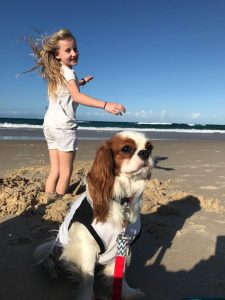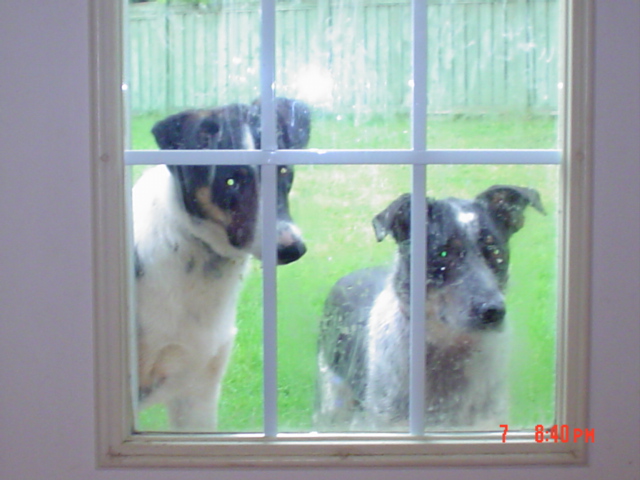Every dog I’ve ever owned has liked to eat poop.
Even the current one, Ted, the Cavalier master of indifference, loves nothing more than going outside and chowing down on some cat or possum poop.
 Saryn Chorney of People Pets writes, it’s a topic that has long perplexed animal researchers and veterinarians. And if you Google the topic, you’re likely to get more than a dozen different explanations ranging from canine anxiety to illness to simply boredom.
Saryn Chorney of People Pets writes, it’s a topic that has long perplexed animal researchers and veterinarians. And if you Google the topic, you’re likely to get more than a dozen different explanations ranging from canine anxiety to illness to simply boredom.
(Boredom explains many of life’s ills, human or dog or cat.)
However, a new study led by veterinarian Benjamin Hart, director of the Center for Animal Behavior at the University of California at Davis, has managed to link the off-putting behavior to “greedy eating” (dogs that quickly ravish their food bowls, according to owners) as well as an instinct connected to canines’ ancestral wolf pack days.
Hart and his team surveyed over 3,000 dog owners. Of these subjects, 16 percent ate other dogs’ feces “frequently” (their owners had witnessed a crappy chow down session at least six times), and of those pups, 80 percent preferred fresh feces less than two days old. Who doesn’t?
Interestingly, the research suggested that the tendency towards coprophagia (the scientific term for poop-eating) was evident no matter a dog’s age, breed, diet, house-training status or compulsive behavior tendency. This finding has unleashed a new theory: Modern day dogs have inherited both their aversion to pooping where they live as well as their likelihood to eat fresh poop from their ancient wolf ancestors.
Back in those wild days, wolves may’ve eaten the fresh feces of sick, lame or old members who accidentally let a load loose as a way to clean up inside and around their den. Since it takes about two days for parasites and other pathogens to develop, eating fresh poop is not usually dangerous, and in fact, eating poop that was festering in their living quarters was actually a helpful way to avoid intestinal parasites such as larvae and worms.
That said, some great minds in the canine scientific community think there may be a bit more to it. For instance, Professor James Serpell of the University of Pennsylvania and editor of the recent book The Domestic Dog: Its Evolution, Behavior and Interactions with People, told the Washington Post he finds the wolf theory “plausible,” but he’s also intrigued by the “greedy eaters” survey findings. He referenced a study of free-roaming wild dogs in developing countries that scavenge for food and, as a result, fill up on a sizable amount of human feces. This seems to indicate that poop could be viewed, errr digested, as a second-hand food source.
Today, dogs (and cats) “are fed diets that are relatively rich in fats and protein, not all of which may be completely digested, making their feces potentially attractive as a second hand food source,” Serpell told the Washington Post.
So, there you have it. Poop-eating is probably a normal, evolutionary dog trait.
I buy the greedy eaters theory: Ted the wonder dog was the runt of the litter, raised outside, and 2 years later, still eats by retrieving a piece of kibble and taking it to the couch or bed to chow down.
But that’s an anecdotal observation, not science.
 Self-care and mental health support at times like these are critical, but can be hard to come by for many still working on the front lines in clinics, both human and veterinary. It’s important to recognize that everyone is stressed, even our clients, but giving others that extra little bit of leeway and understanding can be tough when you’re already at the end of your own rope. (Right, that’s Kate the Vet of Kansas State University and my research partner on a couple of handwashing projects and papers back in the day.)
Self-care and mental health support at times like these are critical, but can be hard to come by for many still working on the front lines in clinics, both human and veterinary. It’s important to recognize that everyone is stressed, even our clients, but giving others that extra little bit of leeway and understanding can be tough when you’re already at the end of your own rope. (Right, that’s Kate the Vet of Kansas State University and my research partner on a couple of handwashing projects and papers back in the day.)








 And that’s why Jodie O’Brien and her husband, Tom, started
And that’s why Jodie O’Brien and her husband, Tom, started .jpg) Described by many as Facebook for dogs, dogtree.com.au is a social networking site where owners can set up backyard playdates for their cuddly companions, instead of leaving them unsupervised to cause havoc at home.
Described by many as Facebook for dogs, dogtree.com.au is a social networking site where owners can set up backyard playdates for their cuddly companions, instead of leaving them unsupervised to cause havoc at home. I am constantly annoyed with pet owners that take their little dogs to the store, especially the grocery store.
I am constantly annoyed with pet owners that take their little dogs to the store, especially the grocery store.  is for service, yet they cannot require a customer to show certification or other proof that an animal is certified. In fact, legitimate service animals aren’t always certified. (For more information on the law, call 1-800-514-0301.) A quick search on Google brought up
is for service, yet they cannot require a customer to show certification or other proof that an animal is certified. In fact, legitimate service animals aren’t always certified. (For more information on the law, call 1-800-514-0301.) A quick search on Google brought up .jpg) Separating the true service dogs from the personal pets makes it hard for those that rely on their service animals for help with a disability.
Separating the true service dogs from the personal pets makes it hard for those that rely on their service animals for help with a disability. 
 "There’s a trend, a growing trend, for people to treat their pets like a member of the family, but they forget we still have to draw the line between our furry children and those without paws.”
"There’s a trend, a growing trend, for people to treat their pets like a member of the family, but they forget we still have to draw the line between our furry children and those without paws.”